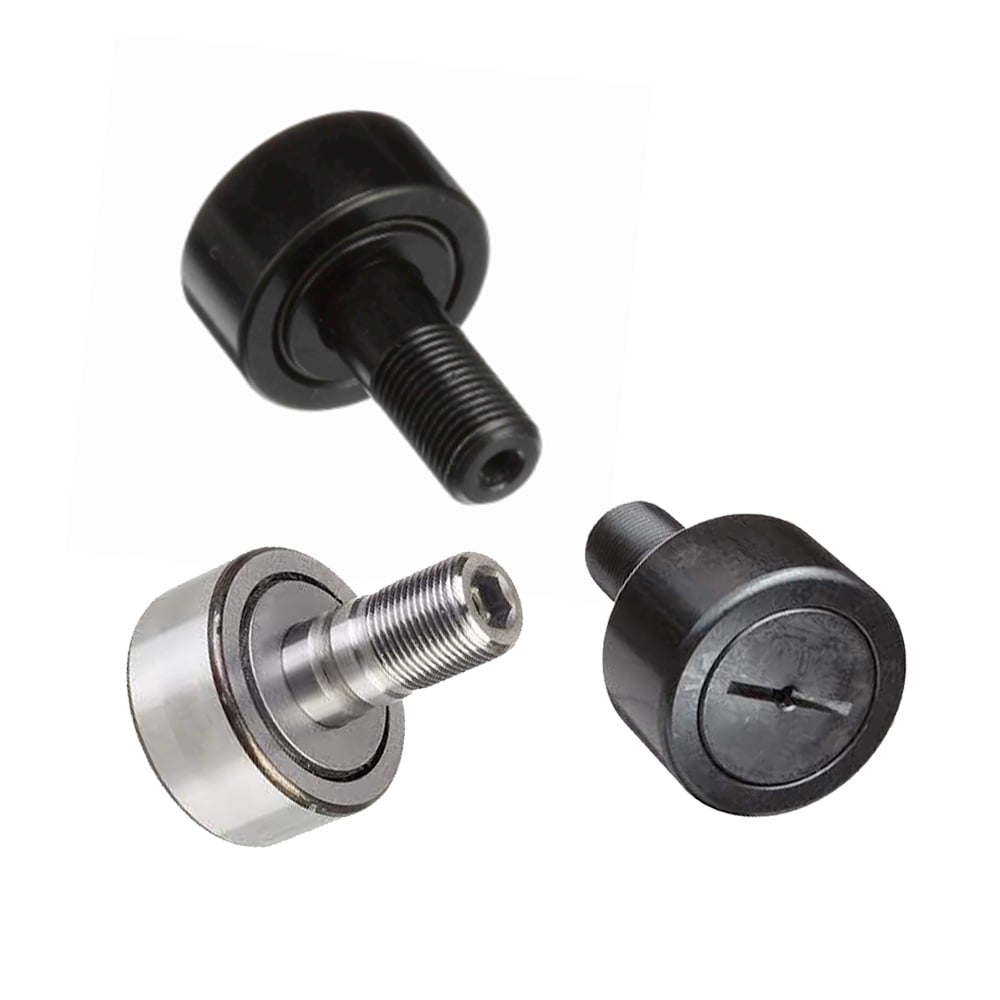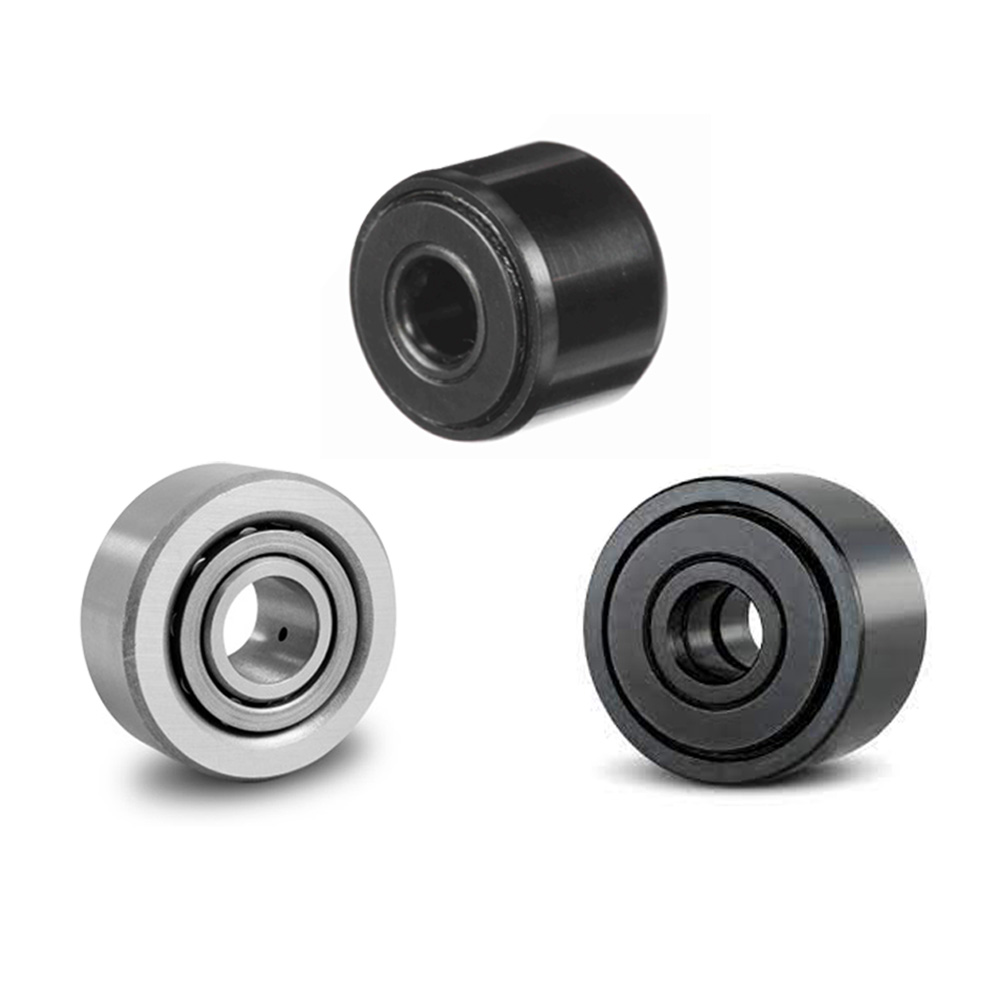What is a Cam Follower Used For?
In the vast expanse of mechanical engineering, few mechanisms are as indispensable as the cam and its accompanying cam follower. They not only simplify complex tasks but are the bedrock of many industrial processes. This blog post delves into the question, "What is a cam follower used for?" while offering a comprehensive overview of its essential functions.
What Is a Cam Follower?
A cam follower, in the realm of mechanical engineering, is specifically designed to follow cam lobe profiles. Serving a pivotal function, it translates the cam's reciprocating, or back-and-forth, motions into controlled linear motion. This transformation is made possible by the cam follower's direct contact with the distinctive lobe profile of the cam.
The uniqueness of a cam follower lies in its capacity to achieve intricate output motions, which can be customized based on the specific profile of the cam's lobe. Such versatility ensures that machines can produce a wide variety of movements to cater to different operational requirements.
Furthermore, some cam follower applications integrate spring loading to maintain consistent contact with the cam. This is especially crucial in scenarios where there might be variations in cam profiles or when ensuring uninterrupted motion transmission is vital for the machinery's efficiency. The spring-loaded mechanism ensures that the follower does not lose touch with the cam, thereby ensuring smooth and efficient motion transfer.
Types of Cam Followers
Variety and specificity are intrinsic to cam followers. They're classified based on the following factors.
Based on the Shape
- Knife-Edge Follower: A sharp-tipped follower that contacts the cam, leading to potential wear due to its pointed design.
- Roller Follower: Features a roller at the tip to reduce friction and cam wear, an enhancement over the knife-edge type.
- Flat-Faced Follower: With a flat contact surface, it's suitable for rapid motion but can experience high stress during misalignment.
- Spherical Faced Follower: A curved contact follower designed to lessen wear and distribute pressure evenly.
Based on the Movement
- Oscillating Follower: Converts the cam's rotational movement into a linear, oscillatory motion, resulting in a vibratory action.
- Reciprocating Follower: Transforms the cam's rotation into a back-and-forth linear motion.
Based on Line of Movement
- Radial Follower: This follower's motion path aligns with the cam's center, converting its rotary action into a linear reciprocating movement.
- Offset Follower: The motion path of this follower deviates from the cam's central axis, leading to a distinct linear motion.
Cam Follower Bearings
Cam followers rely heavily on their bearings for optimal performance. Utilizing roller bearings and needle bearings, they adeptly handle significant radial loads. The rotary bearing core is crucial for precise power transmission and sophisticated automation processes. Known as track followers, these cam follower bearings are engineered for durability, accommodating intermittent shocks and heavy loads. With a design that may incorporate a flexible core, they offer enhanced protection against severe shock loads. These bearings are available in two main configurations:
- Stud type rollers: Integral stud design suitable for direct mounting and high radial loads.

- Yoke type rollers: Mounted on a shaft or pin, ideal for applications with varying alignment or traversal needs.

What Is a Cam?
A cam, integral to the cam and follower system, transforms rotary motion into linear movement. Essential in machinery, it functions through a multi-point lever system activated by a rotating shaft. Notably, camshafts in vehicles convert engine rotation to operate intake and exhaust valves. Beyond vehicles, cams are prevalent in appliances like washing machines, sewing machines, and lawn sprinklers.
Types of Cams
The versatility of cams is evident from their diverse types.
Based on the Cam Shape
- Disk Cam — A compact design with an irregular contour, this cam works with radial motion followers to impart specific motion.
- Wedge Cam — Flat with a distinctive slope, this cam moves linearly, directing a follower to oscillate vertically based on the cam's horizontal movement.
- Spiral Cam — Characterized by a half-circular or spiral groove, this cam converts rotational motion to the follower's vertical reciprocation.
- Cylindrical Cam — Rotating about its axis, this cam has circumferential outlines. It can either have a carved groove for positive motion or use the cylinder surface itself, facilitating follower movement around a parallel axis.
- Heart-Shaped Cam — Resembling an asymmetric heart, it uses the roller's pressure to stabilize the cam.
- Translating Cams — Rotating horizontally, these cams guide a spring-assisted follower. Groove cams can sometimes replace the spring.
- Snail Drop Cam — Used in timepieces like chronograph watches, it guides the follower in a swirl for over 24 hours.
- Conjugate Cam — Comprising two independent rotating cams, the follower detects cam profile errors through angle changes.
- Globoidal Cam — Cylindrical in nature but with a convex or concave circumference, its machined grooves guide the follower in a swinging motion.
- Spherical Cam — Shaped spherically, it has a direct-contact groove with the follower, which orbits a specific position as the cam rotates.
Based on the Follower Motion
- Dwell-Rise-Dwell-Return Cam — Within a single cam revolution, the follower dwells, rises, returns, and dwells again.
- Rise-Return-Rise Cam — The follower undergoes a sequence of rising, returning, and rising again in one rotation.
- Dwell-Rise-Dwell Cam — The follower dwells, rises, and dwells again during one cam cycle.
Based on the Follower Constraint
- Preloaded Spring Cam — This assembly incorporates a preloaded compression spring in the follower to maintain consistent cam contact.
- Positive Drive Cam — This drive operates without needing external force components.
The Working Principle of Cam and Follower
A cam is a mechanical component that produces reciprocating or oscillating motion, which the follower then converts into linear movement or channels to another machine part. Typically elliptical or oval in shape, cams efficiently generate periodic external loads, proving indispensable for various engineering tasks. Their functionality hinges on the symbiotic relationship with the follower.
Cam and Follower Applications
Cams and followers are integral in various applications, such as:
- Internal combustion engines: They drive the reciprocating motion of inlet and exhaust valves.
- Children's toys: Examples include locomotive train sets that utilize periodic motion.
- Industrial equipment: Automatic lathes employ them for tool motion and feed mechanisms.
- Sewing machines: Single-head cams determine distinct seam patterns.
Terminology Associated With Cams and Followers
To master the domain, one must acquaint oneself with its terminology:
- Cam Profiles: The active surface of the cam which comes into direct contact with the follower.
- Base Circle: The smallest circle centered on the cam rotation axis.
- Trace Point: It delineates the follower's movement, crucial for cam design.
- Pitch Curve: Path created by the trace point during follower action.
- Pitch Point: Location of maximum pressure angle.
- Prime Circle: Circle tangential to both the base circle and pitch curve.
- Pitch Circle: Circle from the cam's center passing through the pitch point.
- Pressure Angle: Angle between the pitch curve and follower movement direction.
Summary
In conclusion, cam followers hold an essential place in the realm of engineering and machinery. These components form the backbone of numerous intricate systems, upholding both efficiency and accuracy. For those in pursuit of top-tier cam follower solutions and expertise on "Bad Cam Follower Symptoms" and "Cam Follower Replacement", LILY Bearing offers a curated selection of premium products and informed guidance to cater to diverse engineering challenges.
Keep Learning








